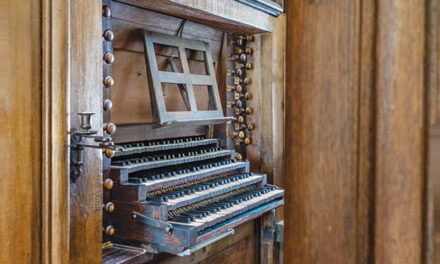The Classical Concert Series, in recent years under the aegis of the Moore County Arts Council, has had a remarkable number of the Van Cliburn Piano Competition winners. There was a tie in 2001 and both Stanislav Ioudenitch and Olga Kern shared the 12th competition prize. Kern appeared on the intimate Sunrise Theater stage September 22, 2008 and Ioudenitch was scheduled for this concert. Alas, a hand condition forced his cancellation, but he helped secure Alexander Kobrin, the 2005 prize winner. He choose a challenging program pairing two transitional sonatas by Ludwig van Beethoven (1770-1827) with an early work by Robert Schumann (1810-56).
While Beethoven’s Late Period is often pegged to 1815, his Piano Sonata No. 27 in E minor, Op. 90 of 1814 has aspects of his later style. Its two movements break with his previous Classical mold. The restless first movement, in E minor and in 3/4 time, breaks with sonata form by omitting an exposition repeat. The second movement, a gentle sonata-rondo in E and in 2/4 time, anticipates the Romantic style of Schubert. This sonata served as a model for Schubert. One of Beethoven’s most accomplished melodies is the exquisitely refined main melody that is repeated in this movement.
Kobrin’s opening bars revealed he possessed a remarkably graduated scale of quiet dynamics. He conjured some of the most subtle ppp that I have ever heard. As one expects of prize winners, his forte passages lacked nothing for power. His first movement surged with energy while he wove the second movement’s melody seamlessly. His interpretation balanced flawless technique with stylistic insight.
Beethoven had a piano with a wider compass when he composed Piano Sonata No. 28 in A, Op. 101 (1816). It has all the characteristics of his final period: complex forms, wide ranging ideas, and a texture that is more polyphonic. Both pianists and music lovers find this one of the most challenging of the composer’s piano works. Seamless lyricism of the opening movement, in A, 6/8 time and sonata form, is harmonically ambiguous because of sparse cadences in the tonic key. The second movement (in the key of F and in common time) abounds in harmonic dislocation and marches in ternary form. The third movement, in A minor and 2/4, serves as a prelude for the triumphant and contrapuntally rich finale.
Kobrin’s “chops,” brain, and heart combined to create a deeply engaging Romantic interpretation of this difficult work. His unusually wide dynamics and palette of color yielded vivid musical lines that heightened the drama. Rhythms were rock solid and contrapuntal passages were very clear.
Robert Schumann expressed the duality of his personality – wild and impetuous versus introverted and reflective – as imaginary characters Florestan and Eusebius. His Symphonic Études, Op. 13 of 1834 are neither études nor symphonic. Most of the original twelve surviving études are free variations upon a prosaic theme by Baron von Fricken to whose adopted daughter Schumann was briefly betrothed. A further five, designated as posthumous, were restored and published in 1873 at the insistence of Johannes Brahms. Schumann meant these to explore the full range of the potential of the piano as an instrument, combining the freedom and subtlety of Beethoven’s transformational methods while exploiting polyphony to expand the concept of texture. The études explore rhythm, mood, extreme independence for each hand, canon and fugue, all brought to a brilliant conclusion in masterful Finale (Étude XII). Pianists can choose which études to include. Kobrin added Posthumous Variations I-II, V and IV-V.
The colors and moods Kobrin conjured were kaleidoscopic as he delineated each piece’s character. Many are distantly connected to the theme. Bach-like études, such as IV’s canon and the partita-like VIII, had great clarity of line. Slow, dark notes evoked the moody sadness of Posthumous Variations II and IV. The brilliance and intensity of his playing of the final Étude XII was breathtaking. The audience’s moment of silent wonder was followed by a prolonged standing ovation.
Repeated curtain calls were rewarded with a ravishing performance of “La Fille aux cheveux de lin” (The Girl with Flaxen Hair) No. 8 from Twelve Preludes Book 1 by Claude Debussy.
The series’ 2017-18 season was announced and the Van Cliburn winners theme continues with Jon Nakamatsu in March 26, 2018. He has performed widely as soloist and chamber musician throughout our state. See our calendar for details.











